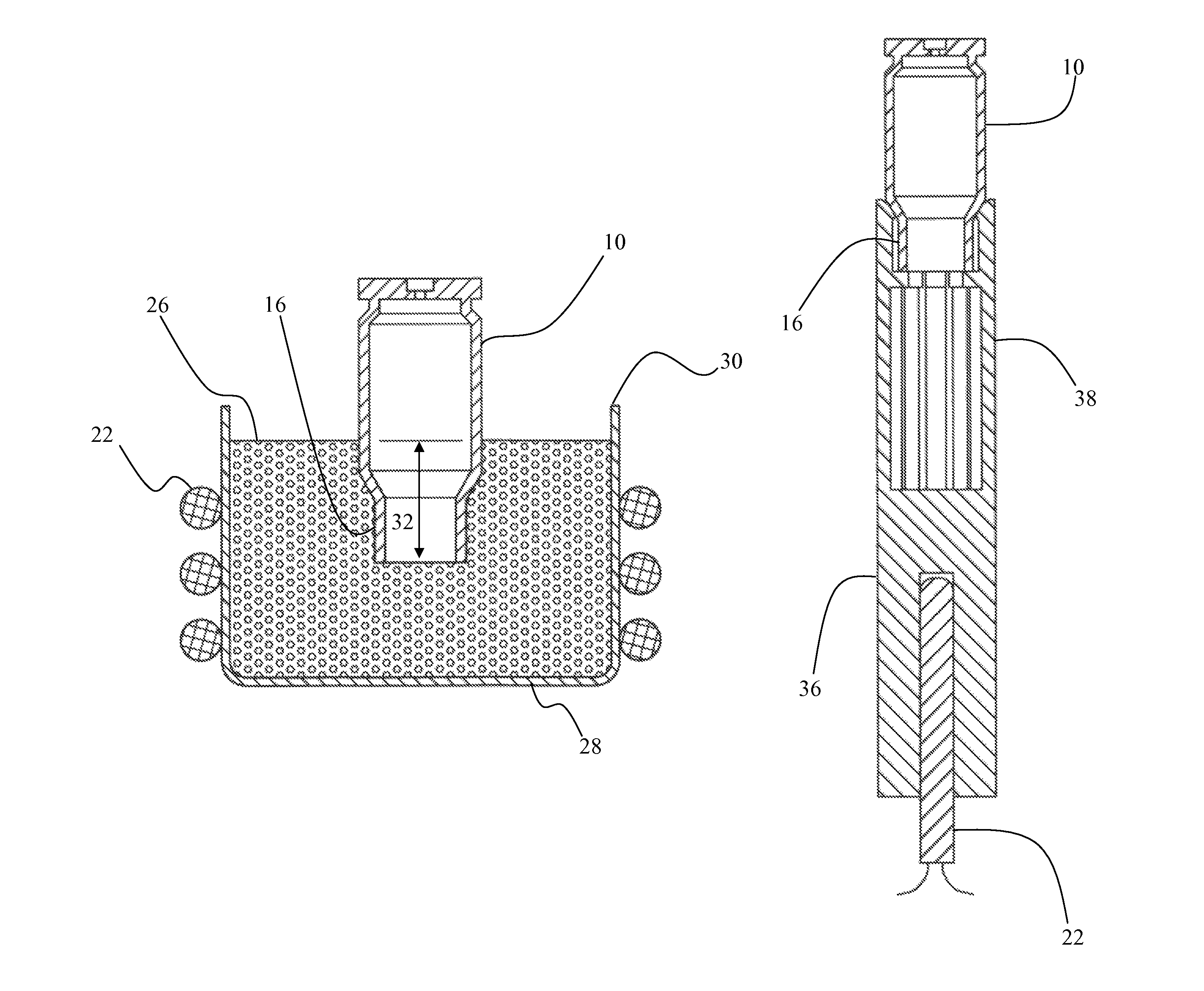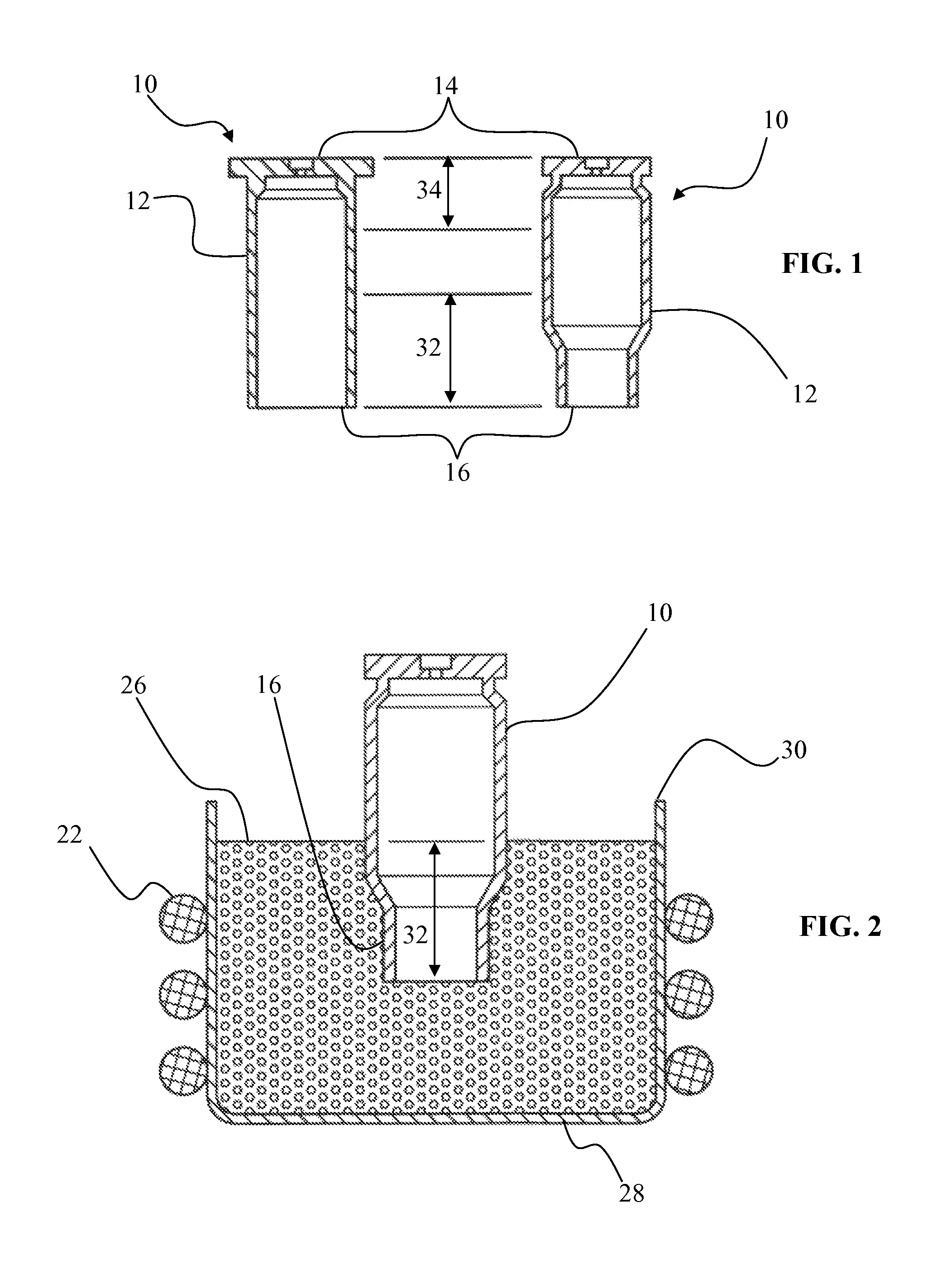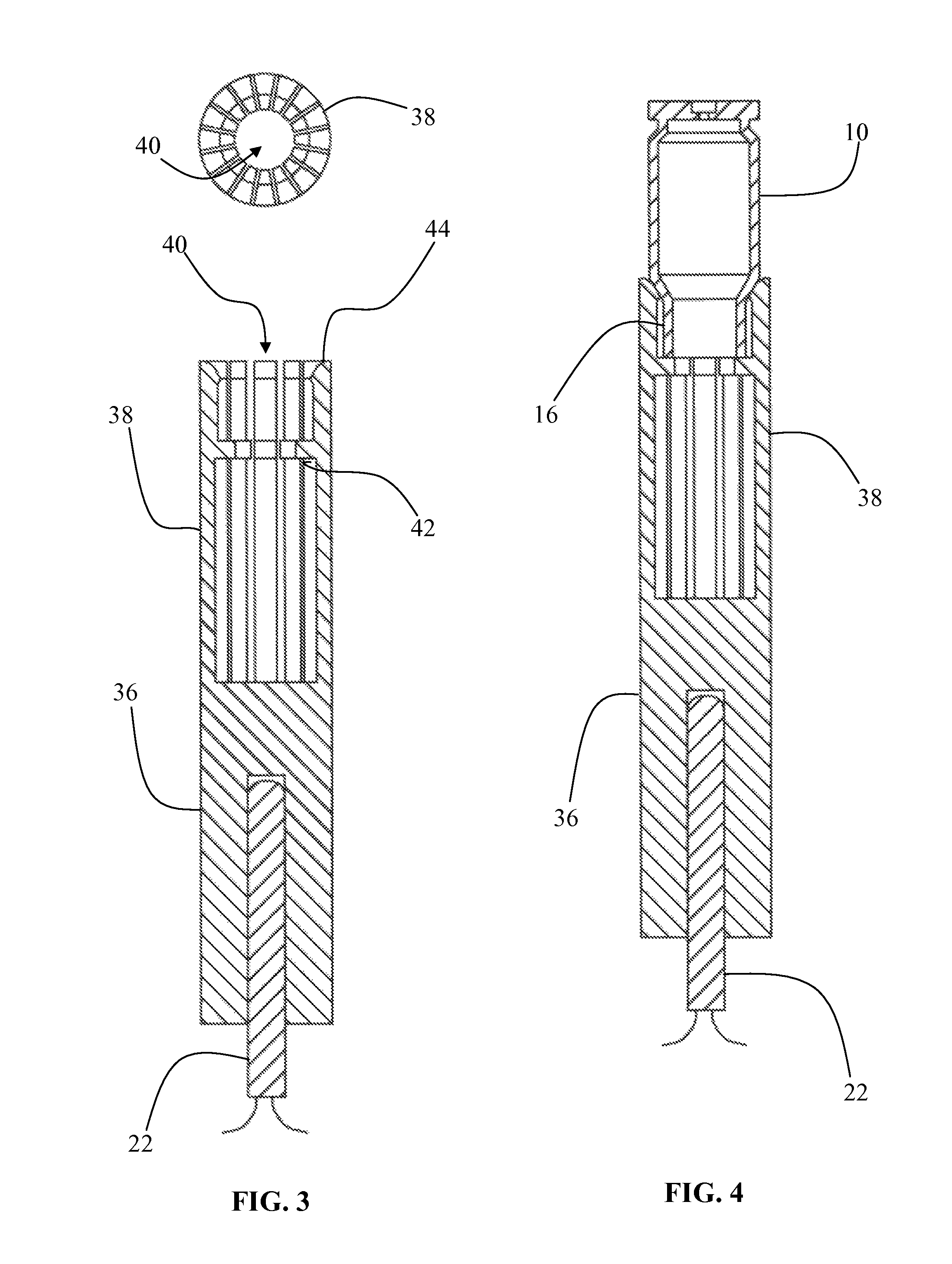Case annealer
a cartridge casing and annealing technology, which is applied in the field of annealing of work hardened cartridge casings, can solve the problems of metal failure, metal hardening of the casing, so as to reduce the likelihood of overheating the casing, avoid the effect of heating more of the casing, and accelerate the heat transfer through conduction
- Summary
- Abstract
- Description
- Claims
- Application Information
AI Technical Summary
Benefits of technology
Problems solved by technology
Method used
Image
Examples
Embodiment Construction
[0031]As shown in FIG. 1, a conventional cartridge casing 10 generally comprises a tubular casing 12 having a closed “head” end 14 and an open “mouth” end 16. The casing 10 can further comprise a necked portion 18 such that the diameter of the mouth end 16 of the tubular casing 12 is less than the diameter of the head end 14. The cartridge casing 10 can comprise a metal such as a copper, brass, tin, aluminum and other metals and alloys used to form cartridge casings 10. Similarly, the casing 10 can comprise any conventional ammunition size. The general description of the casing 10 is not intended to be limiting, but to assist in the description of the present invention.
[0032]As shown in FIGS. 2-7, an annealing system 20, according to an embodiment of the present invention, can comprise a heating element 22 and a heat transfer element 24. The heating element 22 can comprise a coil shape, as shown in FIG. 2, an elongated shape, as shown in FIGS. 3-6, a ring shape, as shown in FIG. 7 o...
PUM
| Property | Measurement | Unit |
|---|---|---|
| temperature | aaaaa | aaaaa |
| diameter | aaaaa | aaaaa |
| diameter | aaaaa | aaaaa |
Abstract
Description
Claims
Application Information
 Login to View More
Login to View More - R&D
- Intellectual Property
- Life Sciences
- Materials
- Tech Scout
- Unparalleled Data Quality
- Higher Quality Content
- 60% Fewer Hallucinations
Browse by: Latest US Patents, China's latest patents, Technical Efficacy Thesaurus, Application Domain, Technology Topic, Popular Technical Reports.
© 2025 PatSnap. All rights reserved.Legal|Privacy policy|Modern Slavery Act Transparency Statement|Sitemap|About US| Contact US: help@patsnap.com



